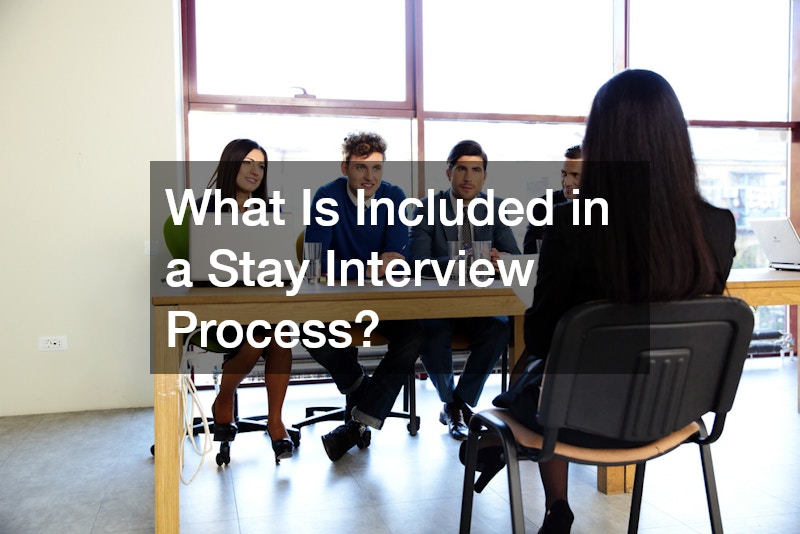

A stay interview process is a valuable tool used by organizations to engage and retain employees by understanding their current experiences, motivations, and concerns. Unlike exit interviews, which occur after an employee has decided to leave, stay interviews are proactive conversations aimed at preventing turnover by addressing issues before they become reasons for resignation. Here’s a breakdown of what is typically included in a stay interview process.
1. Purpose of the Stay Interview
The main goal of the stay interview process is to uncover what keeps employees satisfied in their roles and what changes could enhance their experience. It helps employers identify key drivers of employee retention, such as job satisfaction, growth opportunities, work-life balance, and workplace culture.
Understanding these factors can enable managers to make adjustments that keep top talent engaged and reduce overall turnover.
The interview is designed to be an open dialogue, encouraging employees to share honest feedback about their experiences and expectations. This process not only benefits the organization by retaining valuable employees but also strengthens the employee-employer relationship through active listening and responsiveness.
2. Preparation and Structure
Before conducting the stay interview, managers should prepare specific, open-ended questions that align with the goals of the organization. These questions are designed to gather insights into the employee’s motivations, concerns, and long-term career goals. Typically, the stay interview process follows a semi-structured format with flexibility to explore the employee’s unique needs.
Common areas of discussion include:
- Job satisfaction: What aspects of your job do you enjoy most, and what could be improved?
- Work environment: How do you feel about the current team dynamic and workplace culture?
- Career development: Are there opportunities for growth and development that interest you? Do you feel supported in your career path?
- Work-life balance: How do you feel about your current workload and work-life balance?
- Retention triggers: What would make you consider leaving the company, and what could we do to prevent that?
By preparing in advance, managers can ensure the conversation is focused and productive, while also giving employees the freedom to voice their thoughts.
3. Employee Feedback
During the stay interview process, the most important element is gathering employee feedback. This requires active listening on the part of the manager or interviewer. Employees should feel comfortable sharing both positive and negative experiences without fear of judgment or repercussion.
This feedback often reveals insights about workplace challenges that may not be visible to leadership, such as team conflicts, issues with workload distribution, or opportunities for better communication. By openly discussing these issues, employers can address them before they lead to dissatisfaction or resignation.
The stay interview process is an invaluable tool for maintaining employee engagement, improving retention, and fostering a positive workplace environment. By conducting regular, structured interviews focused on employee satisfaction, career development, and workplace improvements, organizations can better understand what motivates their workforce and take proactive steps to address any concerns. This leads to a more loyal and productive team, reducing turnover and creating a stronger organizational culture.
.





